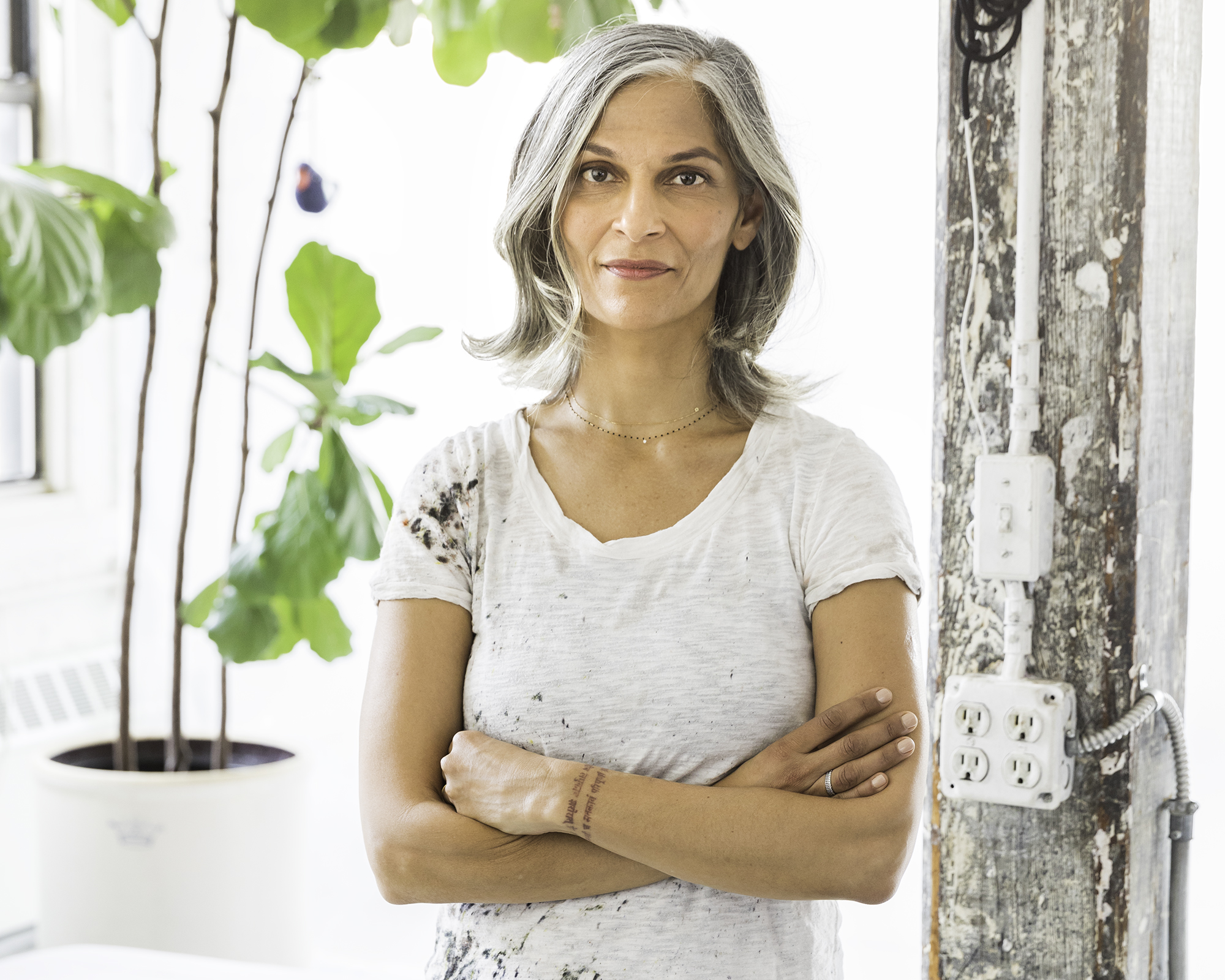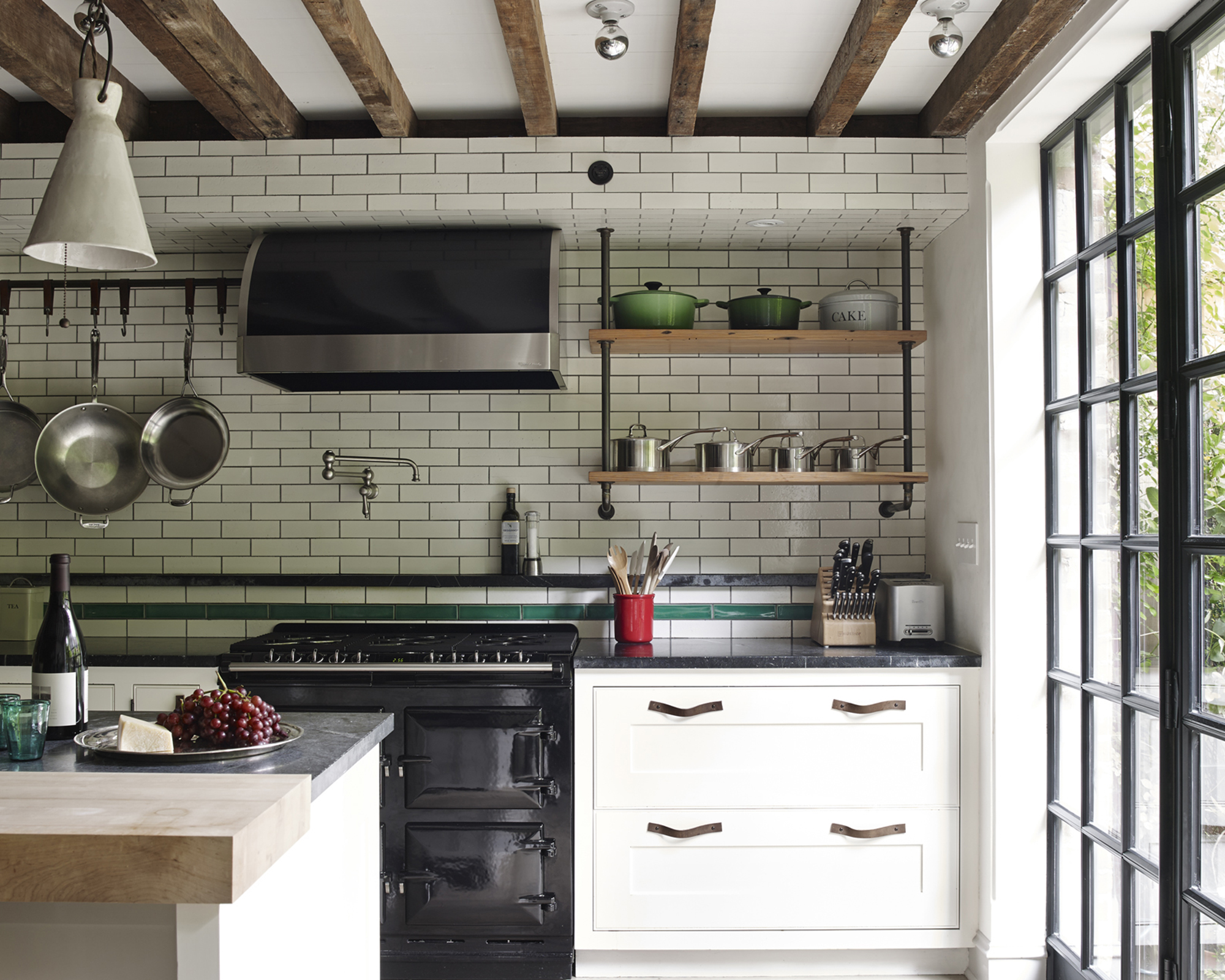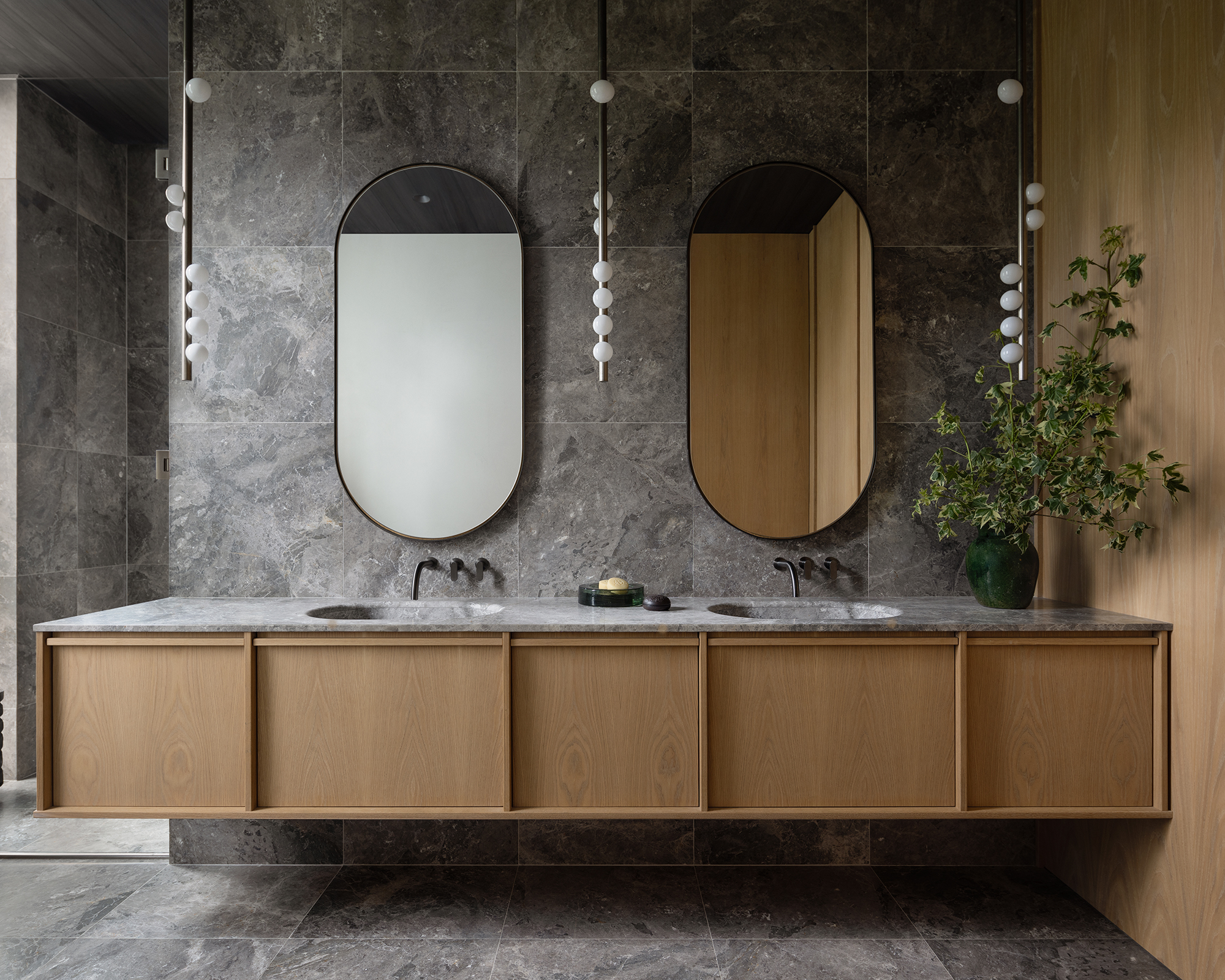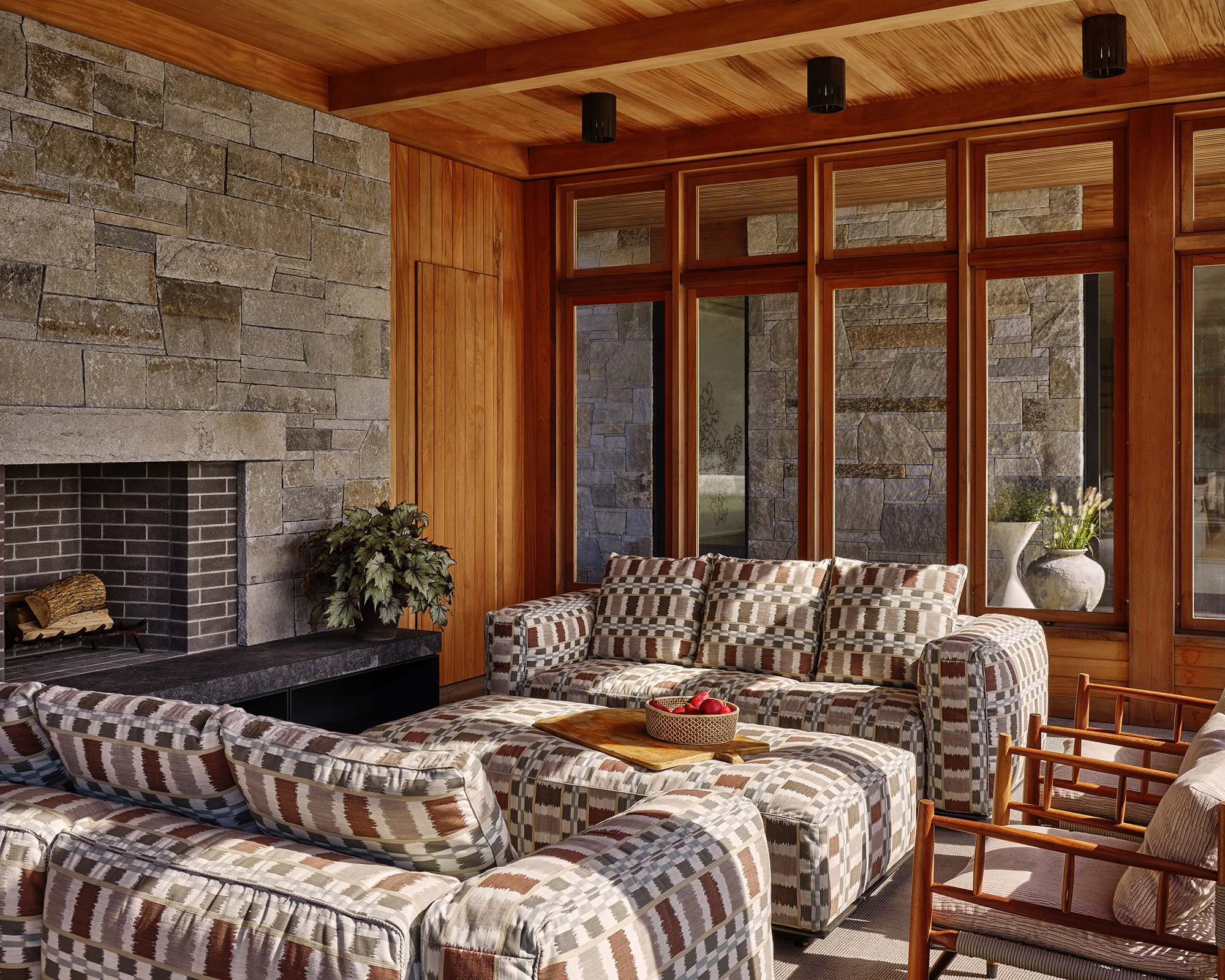'I want people to take a deep breath and feel good' – Poonam Khanna of Unionworks explains how to give every home its mood-boosting moments
Designer Poonam Khanna reveals how she crafts spaces of quiet beauty, where every texture tells a story and every detail invites you to exhale

Poonam Khanna is the founder of Unionworks, a multidisciplinary design studio in New York known for crafting quiet, soulful spaces that marry restraint with deeply personal narratives. With expertise spanning architecture, interiors, and bespoke furniture, she has earned a reputation for creating homes that feel grounded, tactile, and intentional. Her work is frequently featured in leading design publications, and she is sought after for her ability to layer natural materials, subtle textures, and handcrafted details into environments that feel timeless yet distinctly individual.
In this conversation, Poonam reflects on the principles that guide her practice – from uncovering the unspoken needs of her clients to shaping spaces that reveal themselves over time. She speaks about her reverence for the ‘marks of the maker,’ her poetic use of light as a material, and her belief that a home should be curated rather than merely decorated. The result is a body of work that offers a sense of calm – and leaves a quiet, lasting impression.

Your interiors feel incredibly intentional – restrained yet soulful. What’s the first thing you always consider when beginning a new project?
Every project we take on is entirely one of a kind. I’m always listening for what clients are saying without words – the undercurrent beneath their requests. That’s what I’m trying to understand. It’s easy for someone to say, for example, “I want yellow in my home.” But I want to know why: what is it about yellow that draws them in? What emotion are they hoping it evokes? From there, I explore what else can guide the design in that direction. Often, clients don’t consciously know these things themselves, so my role is to compose a harmony from the fragments of melody they offer.
Is that an approach anyone could use when designing their own home – to look beyond surface aesthetics and explore what lies beneath their responses?
Absolutely. Begin with an emotional reference – images, objects, or physical things you already love and live with. Then ask yourself: what is it about that piece that resonates with you? What makes it feel like you, or captures the way you want to feel, or even reflects your sense of identity? From there, you can distill and layer in other elements – complementary pieces that echo or enhance that first inspiration. There is almost always one seemingly random object like this that sparks an entire project.

Your projects often feel more curated than decorated. How do you know when a space is 'done'?
Design expertise in your inbox – from inspiring decorating ideas and beautiful celebrity homes to practical gardening advice and shopping round-ups.
Never! We have a client whose home we’ve been reworking, refreshing, and evolving with for years. I think our approach to design – and our clients themselves – is always shifting. You grow into a space; you collect pieces from travels and experiences, and those objects come with you, layering into the home. It takes time for a space to truly feel like you. Often it’s about those tangible reminders – like a shell on your shelf from a walk on the beach, something that instantly brings back the memory of that day.
You’ve said before that you like spaces to feel quiet and grounded. What are the key elements that help you create that kind of atmosphere?
It’s hard to define exactly, but you notice it in the spaces – they just feel good when you’re in them. There’s a careful attention to tactile qualities and a variety of finishes, which makes a big difference. Handmade objects are important, too; there has to be a trace, a sense of human touch. We don’t create perfectly clean-lined, smooth spaces.
In my own life, I’m drawn to a mix of objects and experiences. I like threads that start to come together – colors, patterns, and palettes that echo each other in different ways. We don’t design for the 'wow' moments; we design for a quiet, enduring volume.
And what is it about those ‘marks of the maker,’ as it were, that appeals so much?
It feels like real life, like real things, carrying the stories of where they came from. Anything that bears the mark of another person’s hand, with a sense of playfulness or childlike wonder, resonates deeply. Not everything around us needs to be perfectly smooth – there’s beauty in things that are a little awkward, that don’t quite speak the same vocabulary as what’s next to them.
What are the pieces in your own life that are special to you, that bring that sense of groundedness for you?
I have some ceramics that are very dear to me – one made by my brother, another by my friends. There’s also a vessel that has been with me since I was a teenager, a piece that went with me to the Philadelphia Museum of Art when my parents bought it. That memory feels incredibly special to me.
Where do you tend to source these sorts of pieces for clients?
Shopping in Belgium is a joy, and France is wonderful too – both Paris and the south have so much to offer. The Netherlands is full of incredible vintage pieces. I’d love to go on a sourcing trip to South America, Japan, and London. I’m drawn to variety; I love a good smorgasbord of experiences and finds.

One of the most compelling things about your work is your use of subtle texture – hand-finished plaster, honed stone, brushed wood. What draws you to this kind of material honesty?
Plaster, in all its forms, is really exciting right now – it has a scent, and it’s fascinating to see how people respond to it. I’m also obsessed with cork, having spent time in Portugal where it’s used so widely. I’m exploring ways to use it to thickly clad surfaces, to create furniture, and even as tiny penny tiles for a showroom floor.
In several of your projects, natural light becomes almost an architectural feature. How do you approach working with light as a material?
I truly believe that light is a material. It’s something I’ve felt instinctively for a long time. In my own life, I use light very sparingly, and we’re updating our office with a Ketra lighting system that aligns indoor light with the natural light outside. One of the things I’m most interested in is creating a foundational system in the four corners of a room that follows the Ketra rhythm, and then layering warmth on top. I’m excited to see how that plays out in a space – you need volume in the way you light.
And finally, if someone walked into a room you’d designed, what’s the one thing you’d hope they feel?
I hope they take a deep breath, and feel comfortable, and that they’d feel good, and that there is something that might catch their eye.
See more of Poonam's work at Unionworks
Pip Rich is an interiors journalist and editor with 20 years' experience, having written for all of the UK's biggest titles. Most recently, he was the Global Editor in Chief of our sister brand, Livingetc, where he now continues in a consulting role as Executive Editor. Before that, he was acting editor of Homes & Gardens, and has held staff positions at Sunday Times Style, ELLE Decoration, Red and Grazia. He has written three books – his most recent, A New Leaf, looked at the homes of architects who had decorated with house plants. Over his career, he has interviewed pretty much every interior designer working today, soaking up their knowledge and wisdom so as to become an expert himself.

